#taj uk
Explore tagged Tumblr posts
Text

Taj Jackson, the nephew of Michael Jackson, commented on the latest allegations against Dan Wootton. Wootton had made disparaging comments about the departed singer. Dan Wootton has been accused of blackmail, solicitation, and other unsavory things.
25 notes
·
View notes
Text

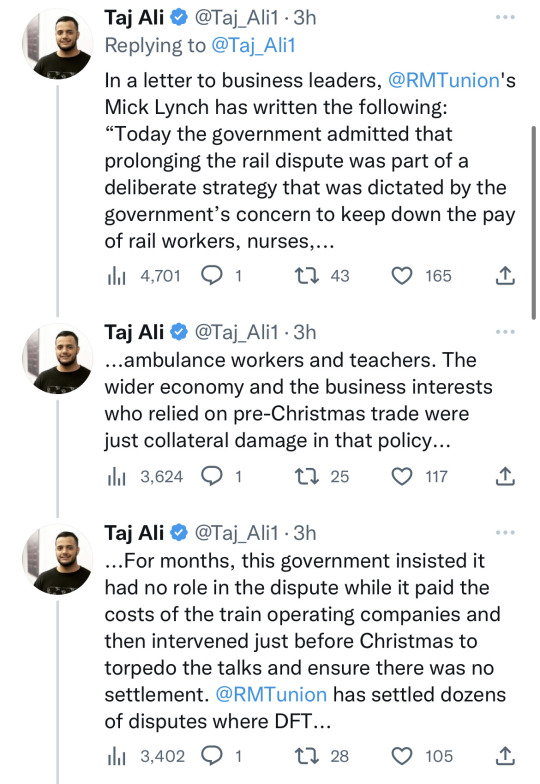



#taj ali#political twitter#huw merriman#rmt union#mick lynch#transport select committee#conservative party#uk news#uk politics
19 notes
·
View notes
Note
So now Tony is listed as director at all of Cait‘s companies. What do you think about that?
Dear So Now Anon,
What a coincidence (not!) I just answered a very similar Anon sent to @bat-cat-reader, which I suppose is clear enough.
But to make it even clearer (if at all possible) and keeping in mind what I wrote in that post about Persons of Significant Control, let's check a couple of things, shall we? For all the three other companies C owns.

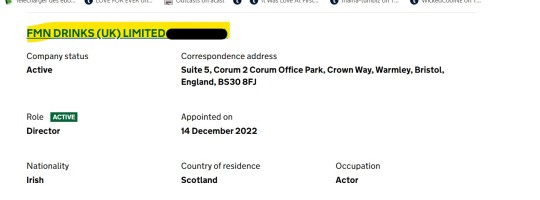
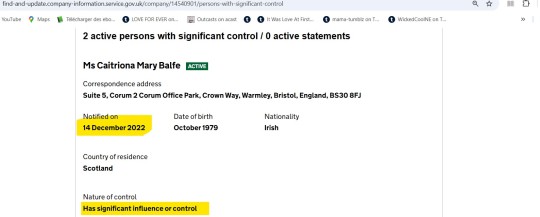
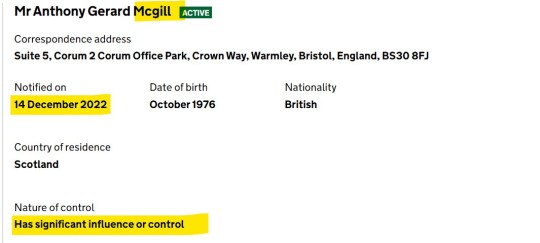
They probably split 50/50 already, which would explain the rather vague 'has significant influence or control'. Why?
Here is why:

The currently available Balance Sheet, covering the period until 31 December 2023 shows there is not much in there. Barely 100 shares (1£/share), about 59K £ assets and 11 K £ of debts. May I remind you a balance sheet covers the company's assets (available funds, including incoming funds), liabilities (debts) and shareholder equity (the company's net worth, which is roughly the result of subtracting liabilities from assets and dividing them by the number of shareholders). The net worth serves to describe what each and every one of those shareholders are entitled to, should the company be liquidated and all its debts paid off. In this case, the retained earnings, which is the figure quoted between brackets (11.292 £) means the company is in debt/in the red.


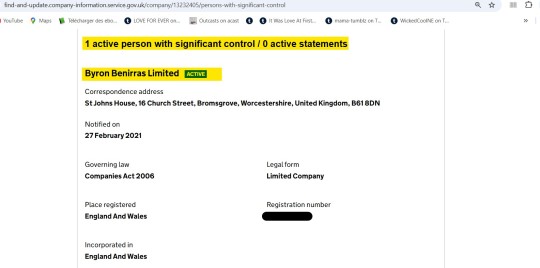

Now, this is very interesting, Anon. Albeit The Happy Couple ™ are now both appointed officers in this company (and T has been so since October 1st 2024), this company's designated PSC is ... Byron Benirras. And who is Byron Benirras' own designated sole PSC? A certain Caitriona Mary B. That is normal - serious 💷💷is indirectly involved, this time, as we know the bulk of her assets is placed there. Therefore, C has full control and sole ownership of Little Nugget Films, too, via Byron Benirras. Remember (ROFLMAO): a legal person (i.e. a company, in this context) has the same rights and the same obligations/duties as the natural (meaning 'real') person behind it (C).
Let's have a look at financials:

On 31.03.2023, the company's assets were about 2.500 £ only and its liabilities around 17K£. In debt/in the red, too. But a clear will to remain in firm control of things from C's side.
This appears to be a totally, carefully planned move, too - future plans, perhaps?



This company has not two, but three appointed officers, one of which is another specialized service company (perfectly legal, in the UK), in charge of all the secretarial work (perfectly legal, too):


Not one, but two PSCs. Same mechanism as for FMN Drinks UK (see above):


Such a nice, tidy, even split. Why? Heh, indeed: why? Unless...
Let's have a look at the company's balance sheet on 31 March 2023:
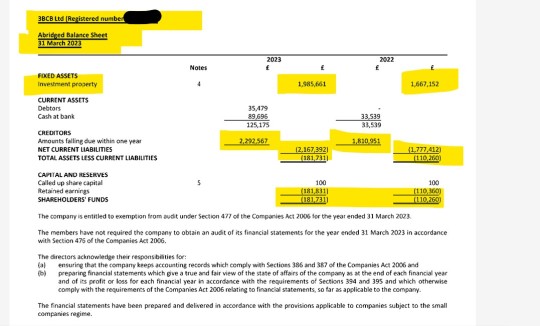
Unless you do acquire real estate using your own funds (a very easy cross check with another one of C's companies reveals the exclusive provenance of those funds - sssh!), no mortgage and no bank loan needed. Property that is legally defined as investment property, which means it cannot legally be a home, nor taxed as such:

[Source: https://prosperity-wealth.co.uk/news/before-you-buy-investment-property/]
Now remind me what real estate might have been bought anytime between 31 March 2022 and 31 March 2023 and valued at about 2.120.000 £?
You'd probably be correct to guess this one:
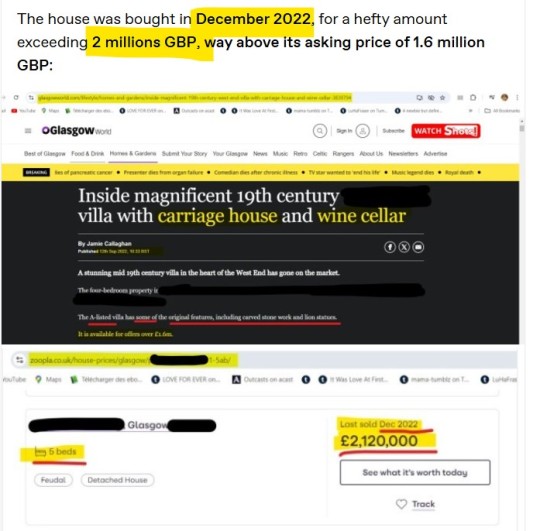
[ For a complete tour of the GLA Taj Mahal's legal intricacies: https://www.tumblr.com/sgiandubh/764266729372368897/anon-rebelde-detecto-un-nerviosismo-muy-revelador?source=share]
Let's have a second look and, surely enough...
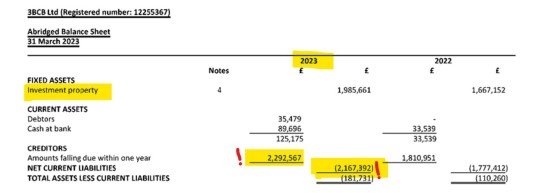
Some simple maths?
2.292.567 (amounts falling due within one year, which covers the 31.03.2022 -31.03.2023 period) - 2.167.392 (net current liabilities) = 125.175 £ (cash at bank). Roger that. I think there is also a second investment property, bought before 31 March 2022 for 1.6 million pounds and shown as such (valued at cost first, then at its fair value, which is evaluated at 1.9 million pounds, in 2023 - a nice appreciation of the initial investment).
I hope this answers your question, Anon. And given the very long and very emotional day that ended (whew, already?) about four hours ago, I hope I didn't miss something or make any gross mistake. You know how some other Anons can be, don't you?
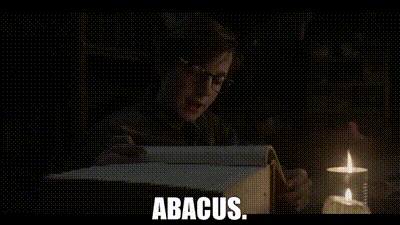
76 notes
·
View notes
Text
List of notable Muslim allies of queer, trans or LGBTQI+ folks
Imam al-Nawawi – ally of Mukhannathun or trans femmes, female transsexuals and effeminate queers
Saint Khawaja Gharib Nawaz – ally and patron of Hijra and Khawaja Sara communities
Saint Baba Bulleh Shah – ally and patron of Muslim Khawaja Sira communities
Saint Lal Shabaz Qalander – patron of Khawaja Sira & trans Muslim communities
Abu Muhammad Ali Ibn Hazm – ally of queer Muslims
Ayatollah Ruhollah Khomeini - ally of transgender & intersex folks
Sheikh Muhammad Sayyid Tantawi - ally of trans & intersex folks
Amina Wadud - ally of LGBTQI+ Muslims, founder of Queer Islamic Studies and Theology (QIST)
Gulbanu Khaki/Gul Khaki - ally of LGBTQ+ muslims, mother of a gay imam
Khaled Hosseini - ally of transgender & proud muslim dad of a transgender child
Siddika Jessa - LGBTQI+ activist, mother of a gay muslim son
Ani Zonneveld
Pamela Taylor
Laura Silver
Omid Safi
Kecia Ali
Ghazala Anwar
Ensaf Haider
Saleemah Abdul-Ghafur
Farid Esack
Zaitun Mohamed Kasim/Toni Mohamed Kasim
Anne-Sophie Monsinay
Imam Kahina Bahloul
Imam Philip Tuley
Scott Siraj al-Haqq Kugle
Farouk Peru
Abdennur Prado
Ingrid Mattson
Hasan Minhaj
Reza Aslan
Alia Bano
Zaid Ibrahim
Azahn Munas
Ayman Fadel
Inayat Bunglawala
Shahla Khan Salter
Nakia Jackson
Jeewan Chanicka
Taj Hargey
Michael Muhammad Knight
Maajid Nawaz
Shehnilla Mohamed
Mustafa Akyol
Writer Sabina Khan
Activist Jerin Arifa
Urvah Khan - LGBTQI+ ally, co-founder of Muslim Pride Toronto
Imam Khaleel Mohammed
Imam Tareq Oubrou
Imam Dr Rashied Omar
Shaykha Fariha Fatima al-Jerrahi
Shaykha Amina Teslima al-Jerrahi
Scholar Hussein Abdullatif
Maysoun Douas
Fátima Taleb
Aydan Özoğuz
Omid Nouripour
Özcan Mutlu
Ekin Deligöz
Cem Özdemir
Artist Nadia Khan
Marina Mahathir
Siti Musdah Mulia
Karima Bennoune
Grand Mufti Sheikh Assadullah Mwale
Muneeb Qadir
Dr. Amir Hussein
Dr. Sana Yasir
Dr. Sali Berisha
Dr. Omer Adil
Hashim Thaçi
Albin Kurti
Supermodel Nadia Hussain
Irish-Bangladeshi singer Joy Elizabeth Akther Crookes
Salma Hayek
Fouad Yammine
Pakistani Director Asim Abbasi
Pakistani Actress Nadia Jamil
Indian Actor Saqib Saleem
Indian Actor Irrfan Khan
Indian Actor Aamir Khan
Indian Actress Zeenat Khan/Aman
Indian Actress Shabana Azmi
Indian Actress Saba Azad
Indian Actress Sara Ali Khan
Indian Actress Huma Qureshi
Indian Director Zoya Khan
Pakistani Actor Furqan Qureshi
Bangladeshi Actress Azmeri Haque Badhon
Actor Muneeb Butt
Indian Actress Zareen Khan
Indian Actor Imran khan
Pakistani Actress Mehar Bano
Filmmaker Faruk Kabir
Filmmaker Saim Sadiq
Filmmaker Sharmeen Obaid-Chinoy
Riz Ahmed
Zayn Malik
Sally El-Hosaini
Malala Yousefzai
Hafid Abbas
Hojatoleslam Kariminia
Singer Sherina Munaf
Writer Alifa Rifaat
Writer Ismat Chughtai
Activist Nida Mushtaq
Activist Aan Anshori
Abdul Muiz Ghazali
Kyai Hussein Muhammad
Marzuki Wahid
Gigi Hadid
President Abdurrahman Wahid (Gus Dur) - ally of waria or transgender females
Sinta Nuriyah - ally of trans & waria folks
Politician Keith Ellison
Mayor Sadiq Khan
Politician Ilhan Omar
Politician Rashida Tlaib
Politician Rushanara Ali
Politician Nabilah Islam
Politician Shahana Hanif
Politician Rama Yade
Politician Humza Yousaf
Politician Zarah Sultana
UK Sectratary General Zara Mohammed
Turkish politician Kemal Kılıçdaroğlu
Bengali Influencer Sobia Ameen
Shaykh Michael Mumisa
Muhammad Musharraf Hossain Bhuiyan
Mufti Abdur Rahman Azad - Hijra ally
Sheikh Hasina - Ally of hijra-intersex communities
Lawyer Iftikhar Chaudhry
Amani Al-Khatahtbeh
Professor Amel Grami
Professor Muhammad Aslam Khaki
Mohammad Hashim Kamali
Mehrdad Alipour
Lawyer Imaan Mazari/Iman Mazari
Shireen Mazari
Syed Murad Ali Shah
37 notes
·
View notes
Text

Anwar Hussein
Photographer whose work helped to transform the public image of the royal family
The photographer Anwar Hussein, who has died aged 85, was integral to transforming the public image of the British royal family: from the aloof and unknowable to something more human. His photographs will also forever be synonymous with the brief life of Diana, Princess of Wales, but his work was much more than that.
Hussein hailed from what is now Tanzania, but his career began in earnest in the UK in the late 1960s, and his talent led to commissions for portraits of the pop and rock gods of the 70s: Marc Bolan, Elton John, David Bowie, Mick Jagger and Freddie Mercury. Soon Hussein realised he needed a fresh challenge. He wanted to record something more historic, more lasting, and he set his sights on the most exclusive family in the world: the House of Windsor.
As an African-born Muslim, Hussein faced many institutional and cultural obstacles. Back then, the go-to look of a royal photographer was clean-shaven, short back-and-sides and a blazer. Hussein was bearded, wore his hair long and favoured a leather jacket and cowboy boots. The fact that the royal entourage were sceptical, and often told him he stood no chance, made him all the more determined. He needed to break into the clique and bring the counterculture to the establishment.
He studied official photographs and found them too posed and contrived, knowing that if he combined the photojournalism techniques he had honed in Africa and on the streets of swinging 60s London with his experience engaging with the divas of film and music, he could show the Windsors in a new light.
When covering royal events for news outlets, he used a longer lens so as not to be obtrusive, which allowed his subjects to relax. The resulting candid, naturalistic images captured moments in between poses, such as Queen Elizabeth II corralling her corgis at Aberdeen airport in 1974. They also brought him to the attention of a Buckingham Palace that was keen to show the royal family in a more modern, relatable way.
By the end of 1976 Hussein had earned the trust of the Queen and Prince Charles, and he was invited to travel the world documenting royal tours of Africa, Canada, and New Zealand.
The greater Hussein’s access, the more intimate the pictures, and the greater the public’s interest became. Then Lady Diana Spencer burst on to the scene and royal mania took hold. Hussein had photographed her before at social events, but following her engagement to Prince Charles in 1981 the symbiotic relationship between the princess and the photographer began.
Hussein’s sensitive work helped propel Diana to become the most photographed woman in the world, and he captured some of the most memorable and important photographs of the “people’s princess”. He was there when she shook hands with an Aids patient in London in 1987, a landmark moment in the fight against the disease. He photographed her cradling a terminally ill child at a cancer hospital in Lahore in 1996, an image of palpable compassion, and Diana’s favourite photograph, though she was upset to learn the child died shortly afterwards.
As her marriage disintegrated, Diana used the power of photography to signify her unhappiness and isolation. This was epitomised by Hussein’s memorable 1992 shot of Diana sitting alone in front of the Taj Mahal, a building that symbolises enduring love.

“She showed her moods in the way she dressed,” Hussein said – and never more so than when she wore her “revenge” dress to a Vanity Fair party at the Serpentine Gallery in 1994. It was the same day that an ITV documentary disclosed that her estranged husband had admitted to committing adultery. She had bought the Christina Stambolian dress three years earlier, but had initially deemed it too risque for a woman in her position. That evening Hussein was there to capture her “looking like a million dollars”.
Hussein was devastated by the death of Diana. They had become friends, and she often confided in him. On a private plane, at a time when she was dating the surgeon Hasnat Khan, Diana asked the photographer about his interfaith marriage (in 1978 Hussein had married Caroline Morgan, who worked in publishing), and about Islam.
Hussein wrote and contributed to many books on the Windsors, and in 2021 his hugely successful exhibition of photographs, Princess Diana: Accredited Access (which included work by his two sons, Samir and Zakir, who both followed in his footsteps), was launched in Los Angeles and toured the world, closing in London in 2024.
Hussein was born in Chunya in what was then the British colony of Tanganyika, the fourth of the five children of Mohamed Hussein and Sardar (nee Begum). The family moved to Mwanza on the shore of Lake Victoria, where his father worked as a civil servant for the British government. There Hussein attended the local Indian public school, but education was not for him, and he left at 16. Instead his passion was for the camera he had borrowed from his elder brother, Akhtar, who owned a small photo shop in the town. Hussein taught himself on trips to the Serengeti plains, where he photographed the wildlife.
Aiming to earn a living as a photographer, he began to tout for work, and in his early 20s the United Nations commissioned him to document the humanitarian crisis in the Republic of the Congo, where conflict raged following its independence from Belgium. The work there cemented his love for photojournalism, and he decided to move to the UK to pursue his dream.
Arriving in 1963, Hussein initially struggled to find work and accommodation. From a tiny flat in Notting Hill, he lived hand-to-mouth until his breakthrough in 1968. He was documenting an anti-Vietnam war protest outside the American embassy in London when he photographed a police officer being dragged from his horse. He knew he had a great shot and hurried to the Daily Mail, where he persuaded them to develop the film. The result appeared on page one the following day.
He was then hired to cover news events and music festivals, and he began to take celebrity portraits. Hussein wanted his work to be published in magazines, where the display and pay were better than newspapers, so he switched to colour film.
He worked as a stills photographer for movie companies and photographed Sean Connery and Roger Moore on the sets of Diamonds Are Forever and Live and Let Die. Hussein knew how to hustle too. In 1970 he went uninvited to the set of Steve McQueen’s film Le Mans. He quickly built a rapport with McQueen and was given a small role as himself in the film. The star then invited Hussein to work on his next film, Papillon.

In recent years Hussein had begun to wind down, and the coronation of King Charles III in 2023 was his last job. He documented the lives of the royal family for more than five decades and, despite the initial naysayers, he was the longest serving royal photographer. As a child in Tanganyika he had only ever seen the British monarchs on postage stamps and, many years later, it was his photographs that would adorn the Royal Mail’s stamps.
He is survived by his wife, his two sons, four grandchildren and his sister Tasnim.
🔔 Anwar Hussein, photographer, born 3 November 1938; died 23 September 2024
Daily inspiration. Discover more photos at Just for Books…?
18 notes
·
View notes
Text
I was 12 years old when the far-right English Defence League (EDL) marched through my town of Luton. Teachers at my all-boys, majority Muslim state comprehensive told us to stay indoors. We were overwhelmingly working-class, the children of taxi drivers and factory workers for whom racist violence was a regular occurrence.
Many of us aligned with people organising the counter-demonstrations against the EDL and soon found other common ground. Alongside antifascism, the activists were vocal on foreign policy issues such as Iraq and Palestine, as well as the domestic issue of austerity.
When I visited my old school recently, I found very different political alliances. Teachers expressed concern about the growing influence of rightwing figures such as Andrew Tate. The influencer is part of a wider network, known loosely as the “manosphere”, which comprises anti-woke culture warriors, get-rich “crypto bros” and Donald Trump supporters. Here were young Pakistani and Bangladeshi boys taking part in a community that includes many who openly despise them. For example, Tate has previously met Tommy Robinson “untold times”, and in a 2022 interview he claimed that the EDL co-founder was “doing his very best to protect England from Islamisation”. To the surprise of many, later that year Tate converted to Islam.
It’s easy to understand the appeal of these influencers, who pose as self-help gurus, speaking directly to insecure young men of all races seeking to live better lives. The growing mental health crisis among young people and the longstanding stigma attached to any discussion of it in the Muslim community leads many vulnerable young men to seek solace in the words of influencers whose videos reference depression, anxiety and how to find motivation to move forward in life.
These young men quickly become enamoured of influencer lifestyles and seek to emulate them. Tate, in fact, grew up on the deprived Marsh Farm estate in Luton, and flaunts his money and flashy cars to impressionable young people. Crypto bros, made hyper-accessible through YouTube, TikTok and Instagram, actively encourage followers to invest in stocks and shares. A year-nine student approached me after I had given a talk at my former school and asked: “How do I become a millionaire without going to school?”
These young people are entering into an economy that is unequal, a society that is atomised and workplaces that are insecure. The idea that you can rise with your class rather than out of it has all but vanished. In Luton, nearly half of children are growing up in poverty. When ethnicity is factored in, figures show that in the UK, 67% of Bangladeshi children and 58% of Pakistani children are living in poverty. Like many areas of Britain, our town has been affected by deindustrialisation, cuts to public services and the resulting loss of social infrastructure. The decline in these spaces – youth clubs, libraries and community centres – has meant a decline in social interaction, too; the void has been filled by social media platforms.
During the Jeremy Corbyn years, many young people had a sense of hope that the state could improve their lives. I remember the long queues of young people outside the polling stations in Luton in 2017, and how many registered to vote at the stalls we used to run at the local sixth-form college. Many of us canvassed for the Labour party in Luton and in neighbouring Bedford. We were promised rent controls, the abolition of tuition fees, free travel, free wifi and an increase in the minimum wage.
Now, in the absence of such a project, many are increasingly turning to individual solutions peddled by online influencers. Why dismantle the system when you can become one of its beneficiaries? Why favour higher taxes that might one day come at your expense?
The pipeline for men of colour subscribing to rightwing influencers online to voting for rightwing parties at the ballot box was made clear during the US election. A record 46% of Hispanic voters opted for Trump – a 14-point increase from 2020. Trump also saw modest gains among Black men. Minority communities have suffered from the effects of globalisation, deindustrialisation and decline.
For far too long in the UK, progressives have taken for granted the votes of Black and Asian communities – but recent electoral events and reports show that this is ill-informed. Take Brexit: it is often depicted as the revolt of the white working class, but diverse towns and cities such as Luton, Bradford and Birmingham also voted to leave the European Union. A new report by UK in a Changing Europe shows British Bangladeshi, Black Caribbean and non-white Muslim and Christian voters are particularly likely to hold socially conservative views on issues such as crime and foreign aid in comparison with those from other ethnic or religious groups. Meanwhile, British Indian and Chinese voters are more likely to hold rightwing economic views. Both the former and current Conservative leaders, Rishi Sunak and Kemi Badenoch, are representative of this wider shift. Many ethnic minority voters already hold rightwing views, and we may see this point of view grow in younger generations as the online culture they consume is dominated by the right.
On the Marsh Farm estate where Tate grew up, there is an alternative model of self-help being pioneered by local residents. Marsh Farm Outreach prides itself on collectivism and face-to-face social interaction. Its bottom-up community-organising approach transformed a derelict 17th-century farmhouse into a community hub. The building is now home to a DJing academy for local children excluded from school, Luton’s first Black radio station and a restaurant and bar. Here, on the estate, few young men believe there are any heroes in Westminster coming to save them, but they have found support in a local community.
Bringing young people into their physical communities, and out of their online ones, may be one way to counter the rise of the right. As these young people reach voting age, time is running out for the Labour party.
8 notes
·
View notes
Text
One piece characters Nationalities

Brazil🇧🇷: known for its iconic Carnival Festival and the statue of Christ the redeemer 🎺 🎊🪇🥁🪘
Sweden🇸����: known as the Pop music Capital of the world 🎵🎤🎙️🎛️🎧🎚️
Japan 🇯🇵: One of the most developed countries,that produce Manga and Anime 🍜🎎👘⛩️🏯㊗️
France 🇫🇷: has the iconic Eiffel Tower,and luxurious fashion brands 🗼👗🍬📸🎨

Canada🇨🇦: famous for its maple syrup, Niagara falls, northern lights and more attractions 🍁🥌 🥞🍯
India🇮🇳: has an iconic building,the Taj mahal,and also the birthplace of Yoga 🧘🏾🥻🕌
United States 🇺🇲: One of the dream place. With famous stars,movies,artists,cities,brands and attractions 🗽🌃🎥🦅🍔🎢🏈
Russia🇷🇺: famous for many things but mostly the beautiful iconic landmarks known as The Moscow Kremlins ☃️🥟💈🌨️🎪

Austria🇦🇹: mostly famous for its castles,palaces and buildings 🏰🧭
China🇨🇳: has beautiful culture and most famous for its food, martial arts,and the iconic Great Wall of China ⛩️🐅🐼🍜🏯🥋
South Africa🇿🇦: famous for its history,natural attractions,food and wildlife 🦁🦓🐗🐃🐘🦏🦒🐦🦃🦚🦈🐬🐳🍊🍌🥘
Germany🇩🇪: renowned for multitude of things but mostly the Oktoberfest 🪽🪽🍄
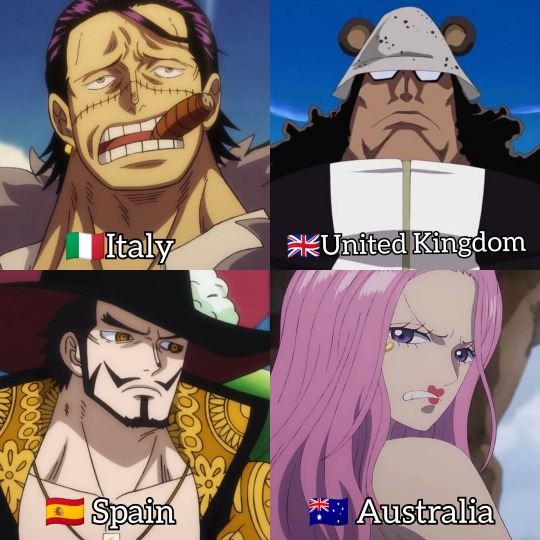
Italy 🇮🇹: famous for having one of the best foods in the world. 🍝🍕🍤🦞
UK 🇬🇧: famous for many things but mostly the royal history and culture,even for many sports. Not to forget tea and fish and chips🍟☕🚌🎡🏰🤴👸
Spain 🇪🇸: known as one of the top wine-producing countries in the world🍸🍷🍾🥂
Australia 🇦🇺: known as one of the most popular tourist destinations with many unique animals and attractions. Like the iconic Great barrier reef ⛰️🐺🦘🐨🕷️
Comment down below if u got more things to add about ur country
#one piece#monkey d. luffy#luffy#nami#roronoa zoro#sanji#sanji vinsmoke#tony tony chopper#one piece chopper#franky#nico robin#soul king brook#boa hancock#ussop#trafalgardwaterlaw#crocodile one piece#dracule mihawk
46 notes
·
View notes
Text

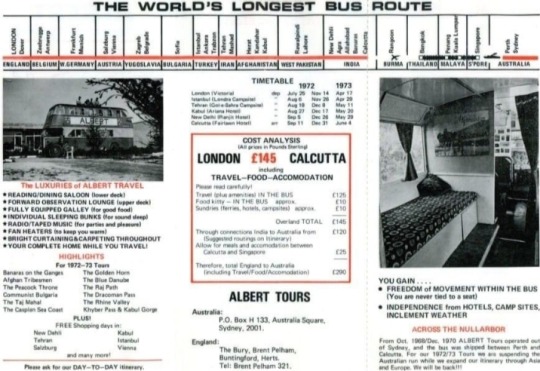
"London (England) - Calcutta (India) - London (England)"
This bus service from London to Calcutta (Kolkata) is considered to have been the longest bus route in the world.
The service, which was started in 1957 and operated by Albert Travel, was routed to India continuing after the UK, to Belgium, through Europe via (then) Yugoslavia, Türkiye, Iran, Afghanistan, and West Pakistan.
After entering India, it eventually reached Calcutta via New Delhi, Agra, Allahabad (Prayagraj) and Banaras (Varanasi).
This route became known as the 'Hippie Route.'
It took about 50 days for the bus to reach Calcutta from London.
The voyage was 32,669 km long and was in service until 1976.
By then, the cost of the trip was £145, including food, travel and accommodation.
The bus was equipped with reading facilities, separate sleeping bunks for everyone, and fan-operated heaters.
There was a kitchen with all equipment and amenities.
There was a forward observation lounge on the upper deck of the later version of the bus.
The bus provided radio and music system for parties. It had time to spend at major tourist destinations along the way, including Banaras and the Taj Mahal on the banks of the Ganges.
Shopping breaks were organized in Salzburg, Vienna, Istanbul, Kabul and Tehran.
#Albert Travel#bus service#bus route#Hippie Route#London#Calcutta#Kolkata#India#travel#travel tours#longest bus route#1900s#20th century
39 notes
·
View notes
Text
Chazz Oliver and Janay Saxon presents: Do It Up
Super rapid flow 💵 ⌚

Chazz Oliver brings the fire with Do It Up feat. Myumi, Janay Saxon, and JU$T AM.
If you like Saweetie, Kahlani, Chloe Bailey, Wiz Kalifa, and Kendrick lamar, you will love Do It Up.
Hip Hop/Rap/R&B ready to give you that club vibe but also rock it in your car!!!!
Produced by Chazz Oliver, this track feat future fire artist.
Listen Do It Up 💵 ⌚ in Spotify:
BIO:
Washington DC native Garrett Chazz Oliver, a producer better known as Chazz Oliver or just Chazz O, began his musical foray at age six when his father purchased his first drum set. He later taught himself to play the piano, bass guitar, lead guitar and Sax. In his teens, Chazz was already composing music, experimenting with multi-track machines and other types of recording equipment. Before he graduated from high school in 1984, he found himself briefly working with R&B producer Kashif (Whitney Houston, Melba Moore, Evelyn “Champagne” King, Stacy Lattisaw and Johnny Kemp,).
As fortuitous as that opportunity was, in 1995 he came into contact with another Super Producer, Nile Rodgers (Chic, Sister Sledge, David Bowie, Madonna and B-52’s). Although it took a couple more encounters over the next year, Nile finally invited Chazz Oliver to Westport, CT, to work more closely with him on the 1996 Nile Rodgers album,”Chic Freak and More Treats.” From then onward, Chazz became an integral part of Nile's work as shown by his co-producing credits for several artists across the board, including All4One, Paula Abdul, Q-Tip, and Samantha Cole, just to name a few.
Despite being Nile Rodgers’ sideman, his efforts did not go unnoticed. As a result of his exceptional success as a producer and his great ear for talent, Chazz moved from behind the keyboard to behind the desk. That would be the executive desk. In 1999 Chazz was appointed VP of Music Programming for AEI Music networks, in Seattle, WA. While at AEI, Chazz was able to help break new songs like Morcheeba's "Part Of The Process" and Lenny Kravitz's "Fly Away," which both debuted in the Gap; Sarah Brightman's "Eden," which played in Banana Republic; the Cardigans' "Erase/ Rewind," also in Banana Republic; and Sixpence None The Richer's "Kiss Me," which played in Limited Too and Bath & Body Works.
After spending many years as a Music Executive, Chazz Oliver decided to combine the executive and creative side of things. In 2007, he established his own Music Production Company, ISMRecordings, based out of Norwalk CT, and began unveiling his own stable of artists (Mr. LA Wryte, Mateya and Taj Dyami). As a way to give back to his music community, Chazz as lent his talents to produce music for regional artists such as Omar Wilson, Rain E. Day and Zen. Chazz Oliver has been featured in Magazine such as Billboard Magazine, BRE Magazine, Starpoynt Magazine and Latin Star Magazine, just to name a few.
Super Producer, Hit Maker, these are some of the things that come to mind when you hear production from Chazz Oliver. From movie scores to radio ready hits, Chazz is ready for any and every musical endeavor. In 2022 Chazz decided to drop some new music for the clubs. The track titled “Love” features signer Taj Dyami and is already streaming like crazy. To keep the momentum going, Chazz also dropped the track tilted “Set Me Free” in December of 2022.
Few producers are capable of having a balance between artist and craft. Chazz is one of those producers. He always infuses a remarkable sense of individuality and creativity into his productions. Most recently Chazz just finished a project with the talented Amanda Marie, from the UK, for the song “Feelin’ Fine”. He is also about to drop the single “Forever” with R&B singer Taj Dyami.
Chazz has stayed in high demand and worked on projects with artists like Rappers Ju$t AM, Zen, Lou Big’z, pop artist Jackie Legere, Nigerian artist Lamboginny and R&B singer Lamone, When you hear a Chazz Oliver production generally there is no mistaking it for anyone else's work. Chazz Oliver and ISMRecordings are poised to bring you............. “The Sound Of Things To Come”!
instagram
#Chazz Oliver#Janay Saxon#janaysaxon#myumi#ju$tam#ismrecordings#newmusic#newmusic2024#rnbmusic#hits#garrettchazzoliver#NewMusic#MusicDiscovery#MusicMonday#NewMusicFriday#rnbsingers#undergroundmusic#rnbweekly#newrnb#rnbfreshfinds#toprnb#summervibes#doitup#hiphop#hiphopmusic#rapmusic#Spotify#Instagram
2 notes
·
View notes
Text
UKI - Episode 365
UKI: Episode 365 is now here on Mixcloud
Featuring:
1. Cameron Sage From - You Won
2. Bleeding Weather - The Guardian
3. Andy Smythe - Love Ain't Free
4. Andrea Zorzan Music - All That Mattered
5. Chriss Palmer - Horizon
6. kuill - Every Version Of You
7. mŸstika -Mal
8. Paxus - Smile
9. Kikee - Such A Great Night
10. @zilpahlouise - Next To You
11. theguiltyparty - Take Me Away
12. Angela Sani - I See You
13. Will Wyville - Tattoos And Cigarettes
14. elmar.w - Please Talk To Me
15. Dorian Taj - 2024 - Hold On Let Go
16. Salò Sulano - Next To You
17. Shannon K - 9 To 5
Broadcast on
Sword Radio UK - www.swordradiouk.com - Thursday 9pm
KrystalRadio Station - www.krystalradio.net - Friday 7pm
Pop Radio UK - www.popradiouk.co.uk - Monday 8pm , Tuesday 8pm and Wednesday 8pm
Bunka Radio (Columbia) - https://www.bunkaradio.com/ - Monday 1am
Charlie Mason Radio (USA) - www.charliemasonradio.com - Tuesday 10pm
YOUR LOCAL INDEPENDENT AND UNSIGNED MUSICIANS - PLEASE BUY THEIR MUSIC - KEEP THE SCENE
#radio#uk#independentmusic#independentartist#ukindependent#indieartists#unsigned#ukindie#spotify#independent
2 notes
·
View notes
Text
Marvel Muslim Superheroes
1. Kamala Khan aka Ms. Marvel

2. Faiza Hussain aka Excalibur

3. Josiah al Hajj Sadiq/Josiah X aka Captain America
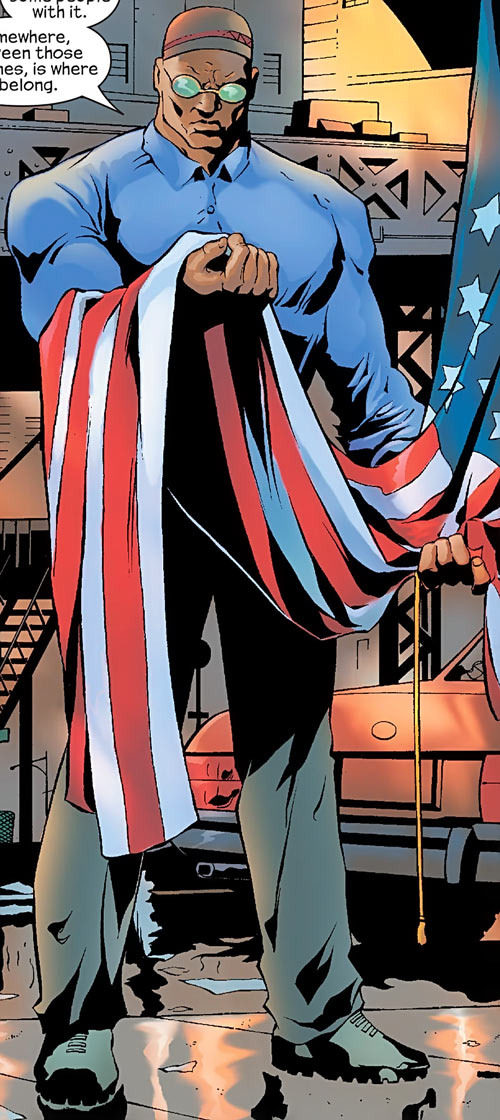
4. Kareem aka Red Dagger - last name unknown
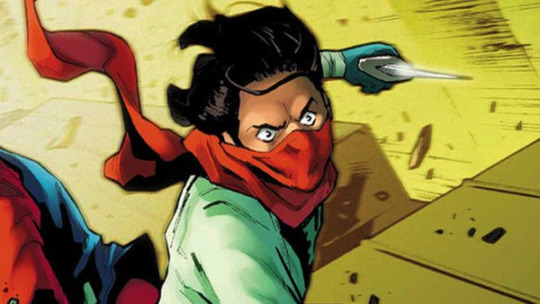
5. Fadi Fadlalah aka Amulet
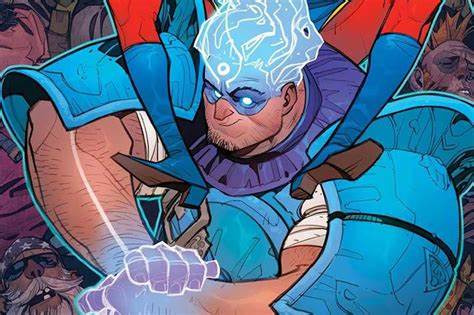
6. Monet St. Croix aka Penance

7. Monica Chang aka Black Widow

8. Navid Hassim aka Arabian Knight II
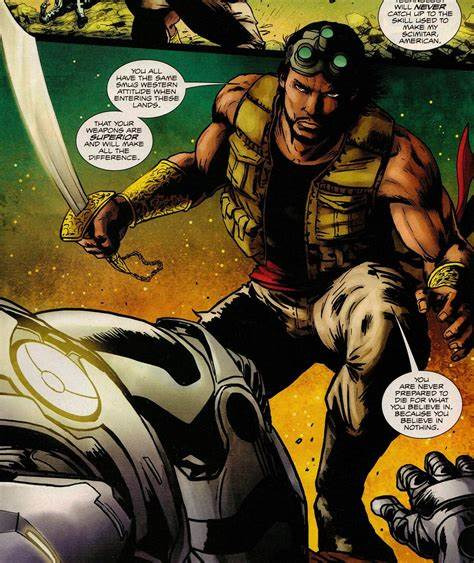
9. Sooraya Qadir aka Dust
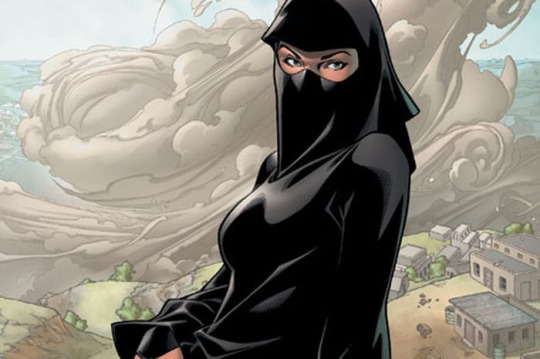
10. Amir Khan - brother of Kamala Khan
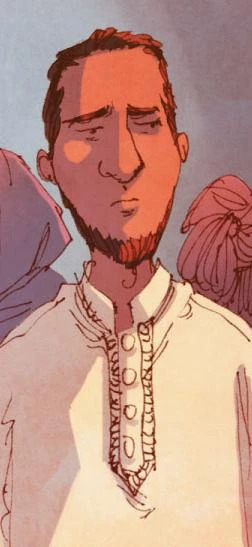
11. Tyeehsa Hillman-Khan - the sister-in-law of Kamala Khan and wife of Amir Khan
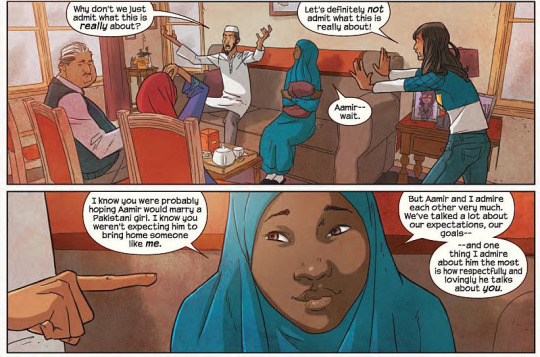
12. Molek - real name unknown; Ghost Rider
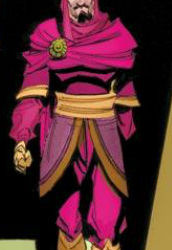
13. Abdul Qamar aka Arabian Knight I
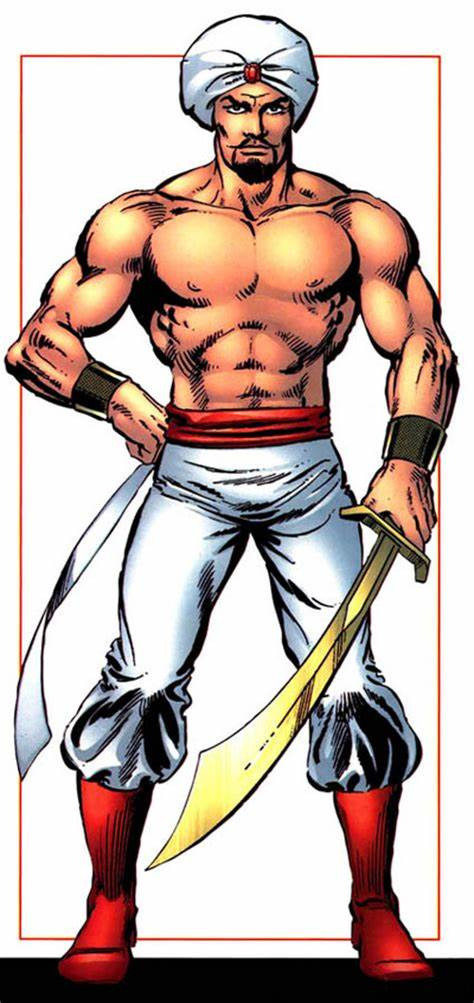
14. Nakia Bahadir - friend/ally of Kamala Khan

15. Faith Shabazz - mother of Josiah X
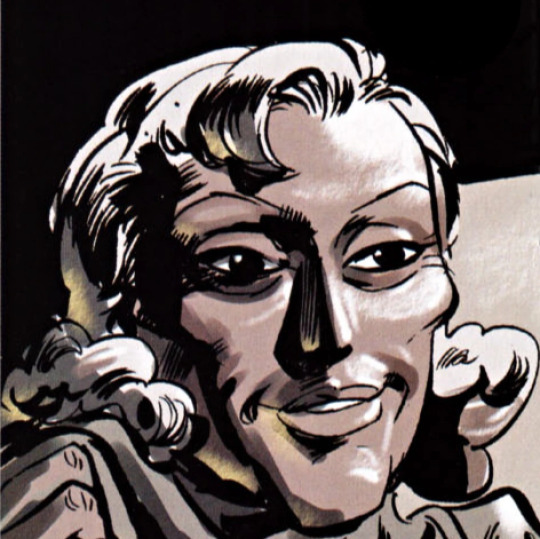
16. Sirocco - last name unknown; mutant
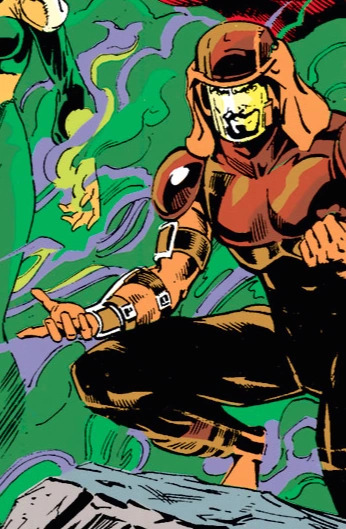
17. Haroun ibn Sallah al-Rashid aka Jetstream
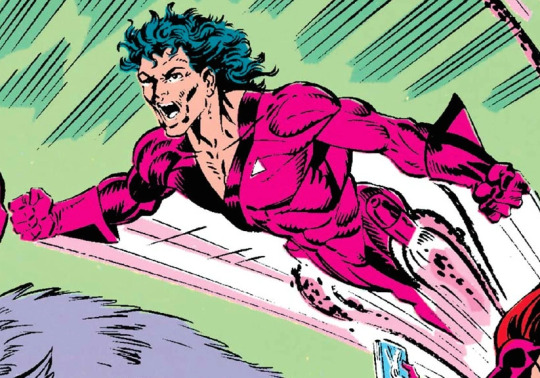
18. Taj Nital - member of Quincy Harker’s group of vampire hunters
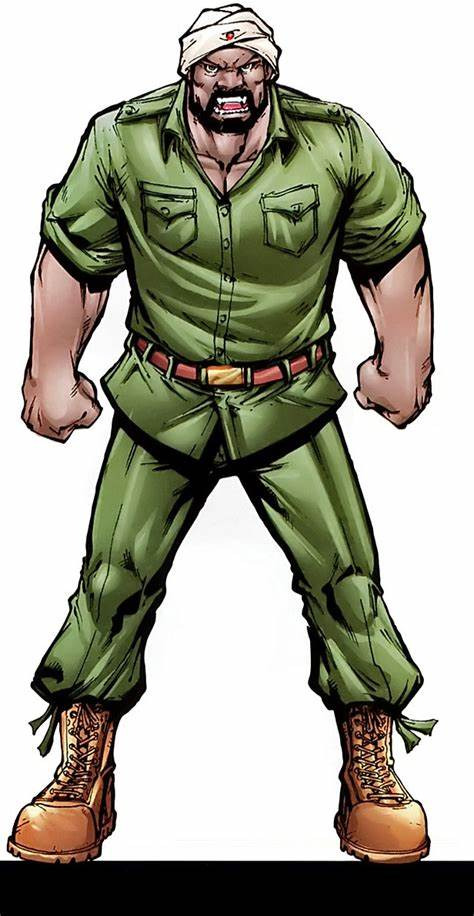
19. Scimitar - real name unknown
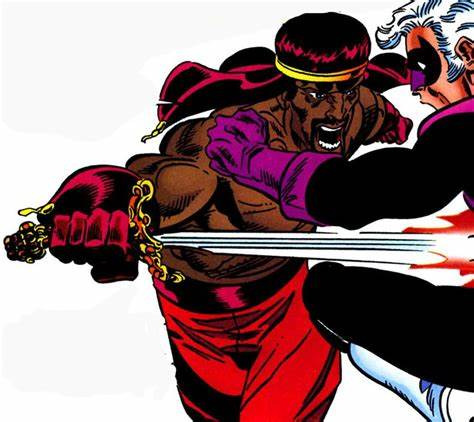
20. Jamila St. Croix - mother of Monet St. Croix
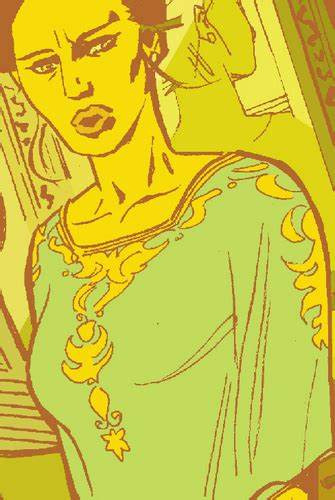
21. Isaiah Bradley aka Captain America
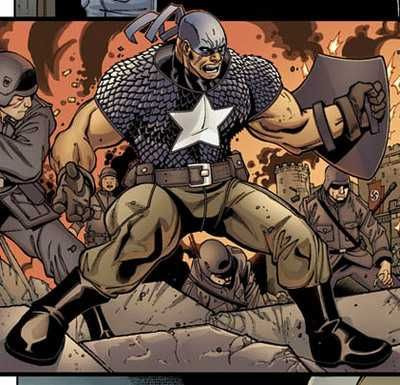
22. Elijah Bradley aka Patriot - NOTE: this hasn’t been confirmed but given his family are Muslim, it’s highly likely he is too. As such, I have decided to see him as Muslim.
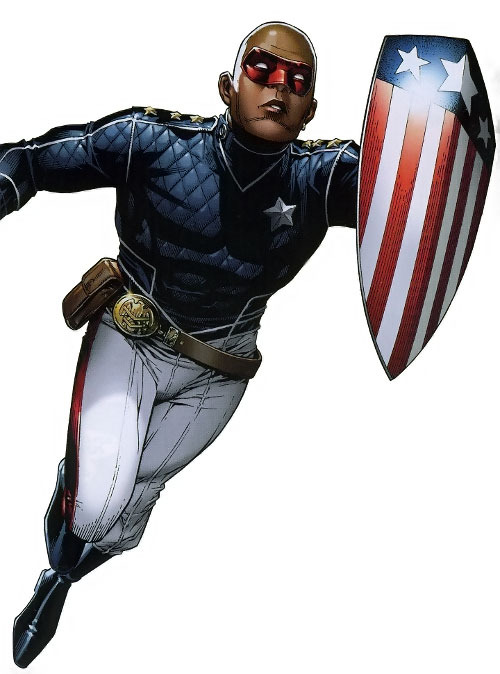
23. G.W. Bridge aka George Washington Bridge
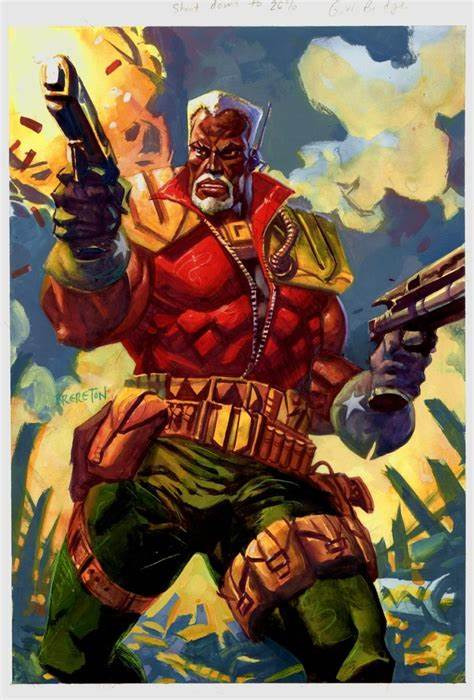
24. Yusuf Khan - the father of Kamala and Amir Khan
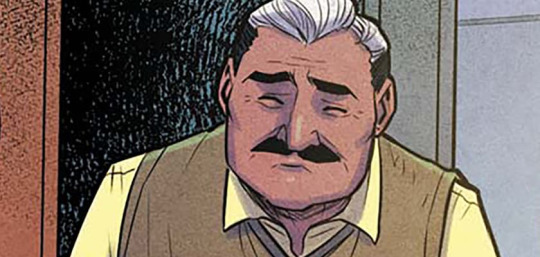
25. Muneeba Khan - the mother of Kamala and Amir Khan

26. Malala Windsor aka Spider UK of Earth-835

Please list any more if you don’t see any on the list. Be respectful with the comments.
4 notes
·
View notes
Note
hi ate taj. ano po work niyo and saan niyo nakita yung job posting?
hi! Im a full time marketing manager & software engineer for a UK based company and I found it online hehe during pandemic bec lahat wfh nun diba :)
but my other clients i also got online (partime or project based) tapos puro referral nalamg ng past clients ko binibigay nila ako kung kani-kanino whahahaha. You can try OLJ/upwork/fb groups :)
but yung full time ko mag 3years na ako sakanya ♥️
3 notes
·
View notes
Text
Recognition of Indian Marble Manufacturers in the World Market
Marble has defined civilizations for centuries. Renowned for elegance and durability, it's timeless. Architects and artists value it for designs. Indian manufacturers lead in global marble trends. They showcase craftsmanship and abundant natural resources.
The Legacy of Indian Marble
India’s marble history includes timeless landmarks. Taj Mahal shows marble’s beauty and durability. Indian marble offers colors, textures, and finishes. Architects worldwide prefer its quality and elegance. Craftsmanship elevates India’s global marble reputation.
Why Indian Marble Stands Out
Diverse Varieties: Indian marble offers unique options. Types include Makrana, Kishangarh, Ambaji, Bidasar. These suit minimalist to luxurious design preferences.
Exceptional Quality: Indian marble boasts fine grain durability. High polish earns trust from global clients.
Affordable Pricing: Despite its high quality, Indian marble remains cost-effective compared to other international options. This affordability allows global buyers to source premium materials without exceeding their budgets.
Sustainable Practices: Many marble manufacturers in India are adopting eco-friendly practices, ensuring sustainable quarrying and processing techniques. These practices resonate with environmentally conscious clients worldwide.
Contribution to the Global Market
India’s marble industry has made significant strides in the global market. Indian manufacturers are now exporting marble to countries like the USA, UAE, UK, and Australia. The following factors highlight their contribution:
Rising Exports: India leads global marble exports.
Innovative Designs: Custom finishes meet international standards.
Skilled Workforce: Indian artisans possess generational expertise. Intricate craftsmanship enhances marble’s unique appeal.
Challenges Faced by Indian Marble Manufacturers
Global Competition: Italy, Turkey dominate premium marble market. Indian manufacturers must innovate to remain competitive.
Logistical Issues: Transporting heavy stones raises delivery costs.
Environmental Regulations: Meeting demand while following rules challenges manufacturers.
Steps Towards Global Recognition
Indian marble manufacturers are enhancing global position:
Adopting Technology: Modern machines enhance quality, efficiency.
Focus on Branding: Naturistic Stones highlights heritage. Storytelling strengthens marble’s unique global appeal.
Expanding Reach: Trade shows and collaborations boost reputation. Designers work with manufacturers for innovative creations.
Sustainability Initiatives: Eco-friendly methods attract conscious buyers. Green practices improve marble industry’s environmental impact.
Naturistic Stones: A Case Study in Excellence
At Naturistic Stones, we believe that every piece of marble tells a story. Our commitment to quality, innovation, and sustainability has earned us a place among the top marble manufacturers in India. We are proud to contribute to India’s legacy in the global market by offering:
A diverse portfolio of premium marble products.
Tailored solutions to meet the unique needs of our international clients.
Sustainable practices that prioritize the well-being of our planet.
The Future of Indian Marble in the World Market
The future looks bright for Indian marble manufacturers. With the increasing global demand for natural stones and the rising popularity of Indian marble, the industry is poised for significant growth. Key trends that will shape this future include:
Digital Integration: Virtual showrooms simplify buying marble. Online platforms help buyers explore options easily.
Sustainable Innovations: Improved techniques reduce environmental impact. Marble quarrying becomes eco-friendlier and efficient.
Increased Collaboration: Global designers partner with Indian manufacturers. Together, they create innovative, unique marble applications.
Conclusion
India’s marble industry shows dedication to quality. Heritage and resources boost its global marble presence. Naturistic Stones ensures excellence and lasting craftsmanship. Indian marble symbolizes elegance on global architecture stages. Villas, offices worldwide showcase Indian marble’s beauty.
1 note
·
View note
Text
Je Matir Buke | যে মাটির বুকে | Bangla Patriotic Song | Motiur R Taj | দেশের গান 🇧🇩 🎹 🥁 🎸 🎶 🎤
Lyrics: Nasima Khan | Tune & Music: Selim Ashraf
@everyone | @highlight | #motiurrtaj #musicvideo #musicislife #Bangladesh #bangla #london #UK #ukreels #fridayfeels #inspire #trendingvideo #tbt #instagood #folkmusic #fyp #reelsfacebook #followers #viralvideo #youtube #youtubevideo
0 notes
Text

Ratan Tata
Indian business tycoon who turned his family’s Tata Group into a global player, and invested heavily in British industry
Ratan Tata, who has died aged 86, was India’s most celebrated industrialist. He modernised the unwieldy business empire founded by his great grandfather in the 19th century and internationalised it. In the process he spread his interests into western countries, with mixed results.
For the UK, that included the £271m purchase of the Tetley Group in 2000, followed more controversially by the acquisition of the steel company Corus for £6.2bn in 2007. Then, in 2008, Tata, himself a car enthusiast, added the troubled Jaguar Land Rover motor business for a further £1.75bn.
He joined the family firm, Tata Steel, in 1962. Educated in the US, and newly qualified as an architect, the young Tata had, he said, no intention of returning to India. But family ties won out. When his ailing grandmother, Navajbai, who had raised him, asked him to return he did so. He was soon promoted, building his reputation with tough reorganisation, followed by more troubleshooting at the electronics and textile companies.
In 1981, he was made chairman of Tata Industries, and found himself confronting an assortment of separate businesses, with different ownership patterns over which there was little formal control. He made a blueprint for reorganisation, having spent time at the Harvard Business School, but it was rejected after opposition from semi-autonomous bosses.
However, in 1991, the 81-year-old patriarch of the group, JRD Tata, chose him as his successor as the overall chairman. Asked why, he replied: “He has a modern mind.”
Tata soon demonstrated it with a tough programme of reshaping that, against continuing opposition, brought closures, job reductions, and the departure of the heads of the steel, hotel and chemical businesses.
He began to focus more on brands and less on heavy industry, and he benefited from the deregulation of Indian industry championed by Rajiv Gandhi. As part of it, he took the company more heavily into the motor industry. Tata lorries already dominated Indian highways, but now he moved into the car business in line with his own enthusiasms. While always seen as a man of modest habits, he had his own lovingly maintained collection of high-powered and classic cars, and delighted in driving them along Mumbai’s Marine Drive most Sundays.
Tata produced what was called “the first Indian car”, designed by and for Indians, in 1998. Ratan did some of the first drawings himself. The Tata Indica was a success. But when he went further a decade later, and the company conceived the Nano, a tiny saloon described as the world’s most affordable car at a price of about £2,000, the project failed. Such a cheap car was not enticing even to those “on two wheels” whom he hoped to attract.
In 1999 Tata had travelled to Detroit to discuss the sale of the motor business to Ford, only to be asked why his firm had gone into the passenger car business when it clearly knew nothing about it. Later he would turn the tables, buying underperforming Jaguar Land Rover from Ford and reviving it.
With sell-offs and cutbacks, Tata reorganised the group into 98 operating companies from more than 250, reducing the labour force by more than a third. He forged alliances with foreign companies and went into information technology.
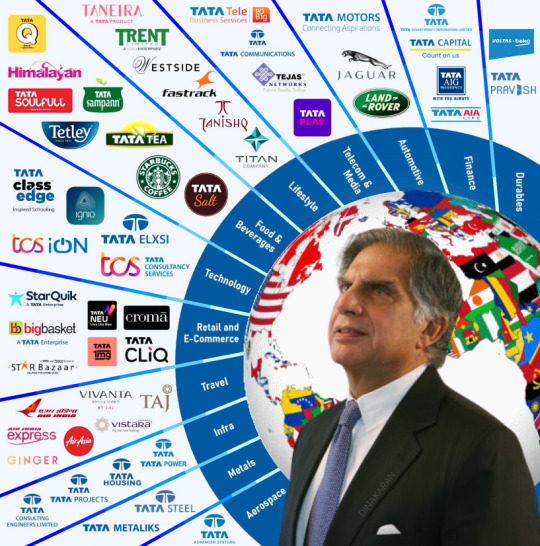
He stepped down in 2012, observing the compulsory retirement rule he had himself introduced, but was still regarded as “chairman emeritus” and was brought back unhappily for a few months when his successor was sacked four years later.
His most shocking day came in 2008, when terrorists took over the Tatas’ Taj Mahal hotel on the front at Mumbai with great loss of life. The company has continued to support staff affected and the families of those who died.
Ratan was born in Mumbai, into the large Parsi Tata family, whose wealth came from a scattered collection of businesses including textiles, hotels, engineering, steel and tea. His father, Naval, had been adopted by the son of the founder, Jamsetji Tata. After Naval and his wife, Soonoo, separated when Ratan was seven, the child was brought up with his younger brother, Jimmy, by his grandmother in a grand Tata mansion in central Mumbai.
Aged 17 he was sent to the US to attend Riverdale Country school in New York City, from where he entered Cornell University in Ithaca, New York. He studied engineering before switching to architecture, graduating in 1959. He worked as an architect for a while in Los Angeles before returning to India, and Tata Steel.
In his 20 years at the helm, Tata’s sales grew by 22% annually and its international revenues rose from a quarter to 58% of the total, while Tata Consultancy Services became Asia’s largest software company.
His British investments have been among his less successful. Corus was bought for an over-the-top £6bn just before the global financial crash devastated the industry. Tata claimed it as “the first big step that Indian industry has taken as a global player”. It was later described by a senior Tata executive as “worthless”. The firm is currently negotiating terms of new investment at Port Talbot, which would be accompanied by hundreds of redundancies, while huge plants on Teesside and Scunthorpe have already been closed or sold for a nominal sum.
Jaguar Land Rover was initially a happier story. Tata’s major investment, including in research and development, made the company for a while the largest foreign investor in British industry. But eight years of profits have been followed by losses since 2018.
Surveying the British scene in 2011, Tata told the Times: “Nobody seems to want to exert the effort to make the UK truly competitive. It’s a work ethic issue. In my experience in both Corus and JLR, nobody is willing to go the extra mile.”
He was a major figure in the international business community, close to US politicians as well as the Indian government, advising the former prime ministers Gordon Brown and David Cameron, and sitting on the boards of multinational institutions.
He was also known as a major philanthropist. Many of the Tata companies were owned through trusts he chaired, and huge sums were provided for medical research and university projects both in India and abroad, particularly in the US, where a number of campuses have buildings bearing his name.
A softly spoken man, renowned for his courtesy, he never married, although he described himself as having come close four times. He was known for living modestly, although his recreations included flying his private jet and driving his collection of expensive cars, as well as a speedboat. He was noted for his love of dogs. The Tata headquarters in Mumbai had kennels and made provision for street dogs, and he was a donor to canine charities. In 2014 he was made GBE.
He is survived by Jimmy, by his stepmother, Simone, a half brother, Noel, and two half sisters, Shireen and Deanna.
🔔 Ratan Tata, businessman, born 28 December 1937; died 9 October 2024
Daily inspiration. Discover more photos at Just for Books…?
6 notes
·
View notes
Text
Day 82 - 26 November - Delhi
We went to get a rickshaw from our hotel to Huymayun’s Tomb which I hadn’t been to before and was exited to see. Walking to the places the tuktuks were we saw our first cow walking down street which was interesting. There was lots of rubbish being collected with a dumper truck and put into a rubbish lorry which we safely scooted around the edge of. We were ready to haggle or the rickshaw but he offered our price so we just took it (evidently need to recalibrate).
The tomb was classic Mughal style in the red sandstone that the Red Fort and Fetehpur Sikri is built in and has the same type of dimensions and symmetry of other Mughal monuments like the Taj. There were loads of Kites flying around in big flocks, they are much bigger than the Red Kites that you see in the UK. We then went to the Sunder Nursery that were beside the tomb and walked around. We had a really nice dosa each and a chai in the cafe in the nursery. We then walked around the bits that we hadn’t gone to yet. We bought a drink and I had a Limca which was great till I took a sip and felt a bee in my mouth that had obviously gone into the can to have a drink. Luckily i felt it before it stung me and was able to spit it out before any damage was done.

There was then a museum for Hymayun’s Tomb which had been part funded by the Aga Khan whose face was plastered up so much you would have thought he was a BJP politician. The museum was actually pretty good although I though it was slightly interesting that they really focused on Hymayun as the hero and main character of the whole museum as it spoke though the whole Mughal period and there was only passing reference to Akbar who was probably the most consequential Mughal ruler, although I did later listen to the new series of Empire that is speaking about the Mughals, which explores Humayun in more light than I’d heard before so maybe this museum is part of his resurgence in relevance. I am not sure if there is a separate Mughal museum. It also surprised me that there was such a positive light shown to the Mughals considering the political situation currently, where the Mughal history of India is subject of political battles.
After that we went to the Lodi Gardens which are these nice gardens with the tombs of the Lodi sultans of Delhi. It was quite atmospheric! After that we got a tuk tuk to the Sikh temple although lots of roads seemed to be closed. The temple was nice and it was quite like the Golden Temple that I had been to before but was a bit more stressful in terms of people hurrying us around and telling us to sit down in the temple proper which is fair enough. The temple isn’t in the water like in Amritsar but beside it.

We then walked to a restaurant in Connaught Place that was actually quite fancy called Kwality. We had a palak paneer, china masala, this delish banana and peanut fritter. We then walked home.
Day 83 - 27 November - Delhi > Jaipur
We got up and checked out but left our bags at the hotel. We took a tuk tuk down to the qutab minar which was about a 50 min ride south. The complex was really nice and had an amazing minaret and the remains of one of the oldest mosques in India. it also had this strange iron pillar that had been brought there from somewhere else that basically hasn’t rusted in over 1000 years and shows wrought iron technology that wasn’t seen anywhere else till the 19th century (so they say). It gave monolith from 2001 vibes!


We then walked down to archaeological walk which was maybe 10 mins away and has old tombs and stepwells and the like. we had a very poor lunch which was actually quite expensive. A grilled veg sandwich was a toasted sandwich with cucumber and lettuce and too much mayo in it. The chips were also reheated (they didn’t offer Indian food). It was so bad I left as poor google review which up to that point had been 5 star!
We walked round the park but it was a was a bit random and not many people were there. It didn’t seem to be kept as well compared to the Lodi Gardens and Sundar Nursery. There were a few dogs around and quite a lot of rubbish. Walking down an empty path there was a strange animal sound that made me jump! Turned out to be a pig not the leopard that my lizard brain had gone straight to! We went to the stepwell which was interesting but then decided to leave and go back to the city.
We got a tuk tuk with some guy and then another guy got on to the front seat with him and tried to get us to go to his bazar for a look, which we politely declined. It dropped us off at the wrong side of Delhi station for our hotel, so we had to walk across the platforms in New Delhi station which very hectic! We got our bags and looked to get an Uber to our station which was annoyingly not the main one which we were right beside.
The Ubers didn’t come so we got a tricycle rickshaw to the station which was was quite mad driving through busy streets. I was sitting backwards so couldn’t see what was happening and just saw what happened as it came past. There were lots of very pretty cows who had had their heads painted.
We got to the station waited got on the train which was in the platform to allow us on. We then got on and settled down. We had ordered some food that arrived in Gurgaun station which was a really tasty
thali! We then got to Jaipur station and got an Uber to the apartment which was above an art studio and was really nice and spacious especially compared to our hotel room that had been windowless!
Day 84 - 28 November - Jaipur
We got up had a chai in the apartment what the host made for us which was nice.
We then went for nice rooftop breakfast in a place that was recommended. It was very nice and we had a veda pav and sprouted mung beans and some delicious chickpeas.
We then looked at some shops in the C-scheme area. Jaipur is famous for block prints and fabrics so we are gonna spend a good bit of time looking through shops and warehouses as we have both been here before. We are looking for things like table clothes and sheets etc. We went to a few clothes shops, and then looked for some jewlery shops for chain for Nina. We didn’t really buy anything as there is so much and we wanted to scout out before doing any buying.
We went to dinner in a place called Thali and More which was was okay but probably not our best meal in India. That being said it was very tasty! We came back to the apartment and walked down a big road to the alcohol shop to buy a couple of beers which felt quite illicit due to the fact these shops had people drinking outside them and are mainly just counters with beer and spirits behind them, making them look quite unofficial. We then watched Jason Borne and went to bed.
Day 85 - 29 November - Jaipur
We had breakfast in this quite well known place near the main palace called Laxmi Misthan Bandar. I had a sabji and puri, and a delicious lassi. We then looked at some clothes shops in and around the main palace area though there wasn’t very much we wanted. We then walked to this Indian antique shop painting shop, which had lots of miniatures and prints that were interesting. They gave us some chai (basically the key to heart) The sun of the owner took us to the roof, from which you could see the whole town.

We went then to a textile wholesaler called Heritage Textiles and looked at the different fabrics and blankets and the like all with the block prints. This shop had a tailors attached so I picked a linen fabric and got them to copy out one of the shirts I have with me that is pretty worn but which I really like. We then went to this other wholesaler called Ridhi Sidhi textiles. We thought it was just a small shop but then we were taken into their warehouse in the other side of the road which was huge! There was lots of stuff and having been around lots of different places we were quite tired and hadn’t bought anything as we needed to take stock. We had dinner in another thali place and then Watched The WorldI Is Not Enough before going to bed.
Day 86 - 30 November - Jaipur
Had breakfast at a place called Masala Chouk which was a great street food market and we had a delish dosa and chola batura some chais and lassis. We then to a tuk tuk to this pottery shop for Jaipur blue pottery. The pottery was nice although thinking about how to carry it hampered any buying potential. We spoke to the owner who said that Nin reminded him of his daughter, and said I was curious and serious! We then walked to an antique shop and then to another antique shop that had another building out the back and a clothes wholesaler. I was looking at more miniature paintings which I have really loved since my Indian art and architecture course in second year.

We then went to another clothes wholesaler called Surestra Impex which was like lots of the other ones but actually pretty expensive compared to the others! There seem to be lots of fashion buyers here looking to buy wholesale, this one said that they sold to Toast in the UK! I then picked up my shirt which was really well done! So much so that Nin got a suit made in linen so was all measured up by a talor!
We then went to this rooftop restaurant by our new apartment which was really nice, although very catering to the tourist market and there wasn’t really much Indian food, although we did get the Indian stuff. We had paneer tikka toastadas, I had malai kofta, pistachio Ice cream. We then watched Goldeneye continuing our spy film week!
Day 87 - 1 December - Jaipur
With it being Sunday, lots of things were closed but we went to a few things that we could. We went back to Anokhi which was quite close to our new apartment. After that we had breakfast in a fast Indian food joint which was okay, not our best breakfast but was okay.
We then went to a few jewlery shops to get a chain for Nina and then Nin also got some new glasses as she only had one main pair! We then had a drink on rooftop bar and were the only people there. We saw lots of kites being flown from the rooftops, which was quite picturesque.
We then got a tuk tuk to the fort for sunset over Jaipur but it was quite a long ride and when we got there we had to keep running and got told it was just a bit further on! We just missed sunset but still had the dusky view! We quickly walked around the palace in the fort. Some random guy asked it I could take some pics of him and his mates on my camera and whatsapp them to him. Which was all good fun but i had to extricate myself from the situation. The tuk tuk was quite long as there was lots of traffic. We then picked up our clothes (my second shirt and Nina’s suite which was made in a day!)


We had dinner in this place called Cafe Kothi which was supposed to have a really good thali but apparently we had to request it 3 hours before which we didn’t do so we had masala omelettes and then went back to bed.
Day 88 - 2 December - Jaipur
We had a breakfast chai and samosa in a bun in this delish chai walla called Gulabji Chaiwalla which was really tasty. We then got a tuk tuk to Ridhi Sidhi to actually do some buying of textiles after all our looking! We saw a big BJP Land Cruiser driving round with a flag on the front of it. There are lots of BJP flags dotted around in different lamp posts and stuff which I don’t remember the last time I was here. We went to Ridhi Sidhi and spent quite a lot of time sorting through stuff and going to the different floors. We then went to a couple of other places and then picked up a necklace that Nin had had polished.


We had dinner in another rooftop places near our apartment but this one had more Indian food, it was also very tasty but we were basically the only people in the restaurant in a throwback to some of the previous places we have been to. We watched the Borne Legacy.
Day 89 - 3 December - Jaipur > Udaipur
Woke up and packed and walked up to the station where there was supposed to be a post office, to send stuff back to the UK. The post office looked very closed to went to another one close by, the whole experience was pretty seamless so hopefully the actual sending will be too!
We then walked to place we had breakfast the day before and had a double round of chai and samosa sandos, before picking our stuff up and getting to the station. I got a copy of Outlook on the platform, which is a magazine I read the last time I was here and used in university which is fairly decent. The train was quite long but we ordered some food to be picked up at stations along the way which is a thing that should definitely come to Europe! We watched the Borne Supremacy as we continue to watch the Borne films backwards!
0 notes